Tips for Tying Killer Egg Patterns
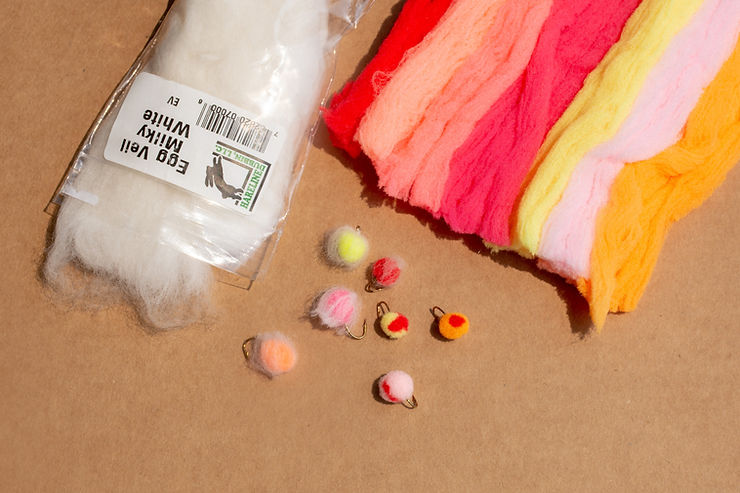
When fishing for fall trout or Steelhead, an assortment of egg patterns deserves a place in every fly box. Eggs make up a huge part of the diets of these fish this time of year. At times, trout and Steelhead will gorge on them almost to the exclusion of everything else. Luckily for anglers, egg patterns are not only some of the easiest flies to fish, but they’re also some of the easiest to tie.
The first thing you’ll notice about egg patterns is that they come in a wide range of colors. The four primary colors that I carry are orange, yellow, light pink, and cream. The eggs of spawning Brown Trout are bright orange. Steelhead eggs range from a translucent yellow to yellowish-orange. Unfertilized eggs, or dead eggs that have been trapped in the rocks and lost their color, tend to have a cream to light pink color depending on how long they’ve been in the water. So these four basic colors will cover the largest variety of situations whether you’re fishing an Erie tributary where Brown Trout and Steelhead are both present or a typical freestone stream for just trout.
Of course, the tastes of fish are often fickle, and trying to predict their palette on any particular day can be a frustrating affair. That’s where other colors come into play. For instance, there are literally dozens of different shades of pink, orange, and yellow available, and all of them have a time and place where they’ll out-catch everything else. But if I’m looking for change-up colors, it’s hard to beat pale blue, chartreuse, and red. These three colors, combined with the four primary colors, cover a large variety of conditions without going overboard on a huge variety.
As always, presentation is the key to success. In my experience, egg patterns work best when dead-drifted under an indicator. Natural eggs, after all, float freely in the current at or near the stream bottom, and a strike indicator can help you get the proper drag-free drift to imitate this while allowing you to adjust for changes in depth. Once your presentation is perfected, it’s really just a matter of repetition, drifting your flies past the fish over and over again, and then experimenting with different colors until you find out what’s working that particular day.
Egg patterns are some of the easiest patterns to tie, and you can whip up a batch of them in only a few minutes. Most egg patterns require only three materials – hooks, yarn, and thread – and I tie them in sizes ranging from 10-16. Size 12 is my standard go-to size, but if I find that fish are finicky, I’ll drop down to a size 16.
Here are a few of my favorite fall egg patterns as well as some tips on how to tie them. In all cases, be sure to lay down a good thread base on each hook before tying in material. This will prevent the finished product from spinning on the shank. Also, I commonly tie these patterns with a bead head for eye appeal, and the extra weight helps them get down quicker in fast water.
Glo Bug and Clown Egg
Glo Bug is just a fancy term for imitation salmon egg. Of all the materials I’ve used to tie this fly, McFly Foam is perhaps the easiest to work with, and it produces a lifelike appearance in the water. Glo Bugs Yarn works well, too, but the material is a little more difficult to cut and will dull your scissors more quickly over time.
Simply take a 1/2-inch strand of material and tie it onto the shank near the hook eye and then tie off and cut your thread. Trim the length of the material so that each side is approximately one hook gap long, and then use your fingers to shape the material into an egg. It doesn’t have to be perfectly round, but if needed, you can trim a few extra strands to give it a more uniform shape or to make it a little smaller. To tie these patterns with a blood dot, stack a thin strand of red material on top of whatever color you’re tying.

Clown eggs are tied the same way except that instead of a single color of yarn, use multiple smaller strands of various colors. This fly shines when fish don’t seem to be keying in on any particular color.
Nuke Egg
The Nuke Egg is a Glo Bug with a milky white veil wrapped around it. This veil, when wet, gives the egg a translucent appearance that is very similar to how real eggs look in the water. For this pattern, tie a Glo Bug and then add a thin layer of veil near the eye of the hook. Drape the veil over the Glo Bug and then cut the ends of the veil so that they are slightly longer than the egg.
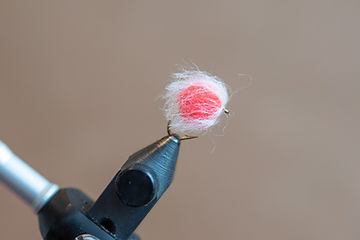
Sucker Spawn and Crystal Meth
Sucker Spawn is tied with two or three strands of regular knitting yarn. Tie in at the bend of the hook and create a series of small bumps with the material on top of the hook shank. Basically, the finished fly will look like a cluster of tiny eggs.
Crystal Meth flies are tied the same way except with Dyed Pearl Diamond Braid. The braid is stiffer than the yarn but has excellent sparkle in the water, which makes this one of my favorite Steelhead patterns.
Estaz Egg
Estaz Eggs are perhaps the simplest of all. For size 12 and 14 hooks, tie in a length of petite Estaz (for size 8 and 10 use standard Estaz) near the bend of the hook and make four or five turns of material until you reach the eye, and then tie off. This fly is dynamic in the water and catches fish when nothing else will. Like all of the other egg patterns mentioned here, I tie them in a variety of colors and sizes, and they’re killer for both trout and steelhead.
Did You Find These Tips For Tying Egg Patterns Helpful?
Stay up to date with the Dark Skies Fly Fishing monthly newsletter for free and receive the latest in fly tying tricks, tips, and techniques, fly fishing news, stream reports, as well as updates on new flies added to the Online Store and exclusive discounts!
Sign Up Now
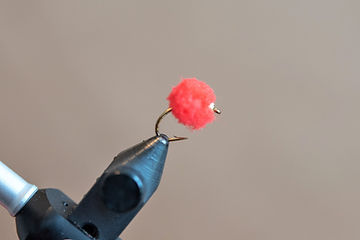

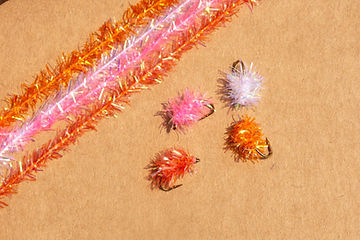
Great tip on the clown eggs!! Many a successful, experienced (older) fly fisherman carry them. They really do look insane, but they catch fish when solid colored eggs are not even getting a side glance.